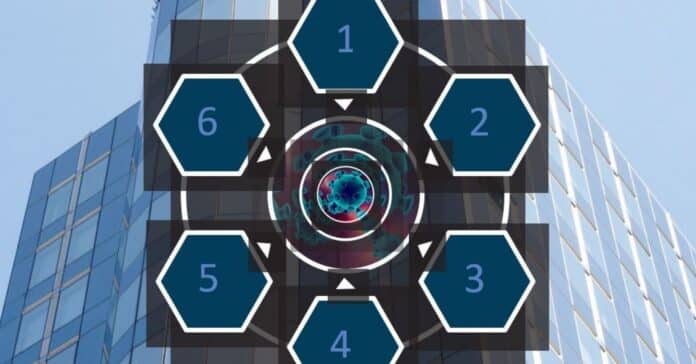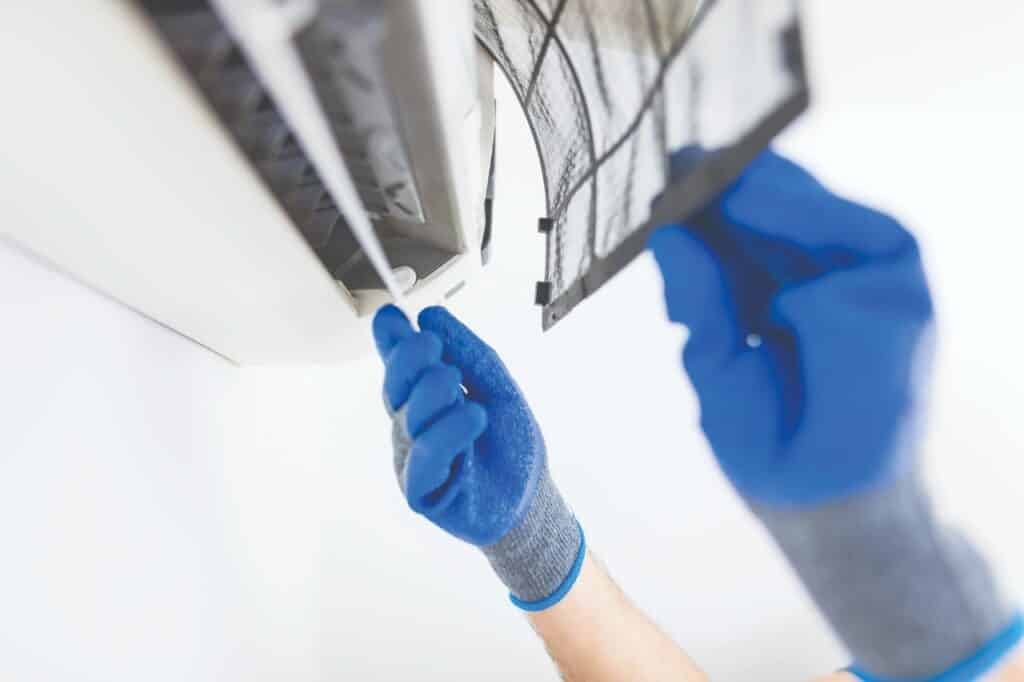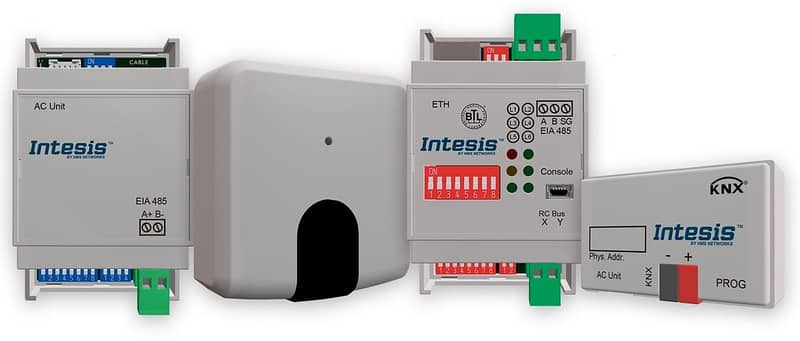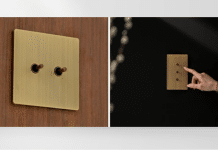
The pandemic coronavirus infectious disease (COVID-19), caused by severe acute respiratory syndrome coronavirus 2 (SARS-CoV-2) has affected our day-to-day life in many ways, and the effect will change how we consume, how we learn, how we socialise, how we work and communicate for the foreseeable future. Whilst it is too early to assess the damage caused, one thing that is certain is that responsible companies will have to include new procedures and use technology to aid in the prevention of spreading of this virus and other future viruses.
One consequence of the COVID-19 outbreak is we now need to think about new ways of installing and using Air Conditioning (AC) systems, as well as the ways we will integrate them in the Home or Building Control System.
Today, with Covid-19 the most mentioned and important message is the need for “Clean Air” and the importance of ventilation.
Therefore, we need to focus more on ventilation. In consequence we may be need to spend more time and money on this element of air conditioning, which may perhaps lose some of air-conditioner’s efficiency or some of the energy savings that AC units have started to deliver over the last few years. This consequence is because our modern AC installations are not really designed to provide the required higher air flows to give good ventilation with the same time/ cost profile as required for energy saving. Tomorrow, efficiency and energy savings will come again, as the air-conditioning technology adapts to focus more on delivering these new higher ventilations and air quality, so be ready for today’s adversities but start to prepare for the new challenges we are facing.
In this article, we would like to share some best practices or improvements we can all do in our systems integrations to help prevent COVID-19. The AC units and ventilation systems are difficult to change or improve without new equipment, but one of the advantages of modern home & building control systems is that we can improve the system, by programming new features without having to change any physical device, or in the scenario of an office that does not yet have a control system able to do this, it is cheaper and faster to install a control solution that can offer this level of adaptability, rather than change the Air Conditioning units.
What can you do with AC units to prevent the spread of viruses?
Keep low fan speeds on the AC units
Virus particles can travel in small droplets suspended in the air. The good thing is that the weight of these droplets mean that they drop down to the ground easily, so this is why the recommendation of 2 meters social distancing has been put into place. But inside buildings Air Conditioning flow can move these droplets further, and so to reduce extending the distance droplets can travel keeping low fan speeds in the AC units is very important.

From a control side, by setting restrictions on the fan speed change we can program the AC units to always work in low speed and prevent local users from changing this speed with remote controls or wall-mounted control panels. As a general recommendation though, always turn-off the AC unit if it is not needed for heating or cooling especially if the AC is not circulating freshly supplied air, in order to help stop the spread of the virus.
Keep filters clean
It is important to know that the filters on AC units do not capture Virus particles, but this can be done by the filters on the ventilation (air renewal) system, where normally there are better filters in place. Please note that for effective capture of the virus particles user needs HEPA filters as a minimum, but, for example, REHVA (Federation of European Heating, Ventilation and Air Conditioning Associations) states that it is not necessary
to change current filters in the ventilation system to HEPA filters, as it is unlikely that SARS-CoV-2 particles in the outdoor air will arrive into the inlet air duct of the ventilation system, and the current filters installed can provide a reasonable amount of protection due to their low concentration despite occasionally coming into the system with the outdoor air.
Where controls can help though is to notify the user that a filter is dirty, so maintenance is required. This could be done by operational hours (based on previous experience) or having a dirty filter pressure switch on the filtration system. Dirty filters also reduce air flow, so it is important to keep them clean to ensure the maximum air flow possible, with a by-product of reducing energy use by ventilation fans.
Please note that filters on the AC indoor units are basically for filtering dust only, and do not filter virus particles, but they are important to help maintain people’s health and it is important to check that the AC unit is working properly. Connecting it to a control system will allow this to be done easily.
Heat Recovery Ventilation Units
These units allow users to ventilate rooms with fresh air while recovering energy from the air that is extracted from inside the building to the outside of the building. Please note, many of these types of units can be completely integrated inside the control system connected to the AC by using Gateways, which act as a simple low-cost way of allowing two different systems to communicate together.
As a comment, normally these kinds of heat recovery ventilation units are ducted directly to the AC indoor units, and a duct from the ventilation units is connected to the AC indoor units, so the indoor units are what spreads the fresh air in the room. The reason this needs explaining is that if the AC unit is OFF, then user is not performing the room ventilation as planned. So, in that case, it is very
important to use a control system to keep the AC units ON (if cooling or heating is not required then in ventilation mode) when the heat recovery ventilation unit is ON.
As a general recommendation the ventilation system needs to have extended operation times to ensure clean airflows, generally from 2 hours before to 2 hours after human presence in nominal conditions and needs to be kept ON at low speed when no humans are present, for example at night or weekends.
Open the window
If the installation does not have a mechanical ventilation system, then user needs to open the windows in order to boost air exchange rates. If user already has a mechanical ventilation system, then open the windows from time to time as this will help to boost air exchange.
Using controls can help user to prevent having the AC ON when the windows are open, but in case user needs the AC ON due to high temperatures in the summer, then keep the AC’s setting temperatures under tight control in order to not waste money cooling air that will be lost through the window.
Keep air direction flow from pointing directly at people
Not sending the air flow from the AC directly at people will also help prevent the spread of viruses. In the AC units with vanes/louvres, keep them in a fixed position to send the air where no people are present. By again bypassing the AC’s local controls, will avoid users changing the vanes/louvres positions.
Integrate Air Conditioning system and Heat Recovery Ventilation units using Gateways.

Using Gateways such as HMS Networks Intesis’s Air Conditioning interfaces, can help form a portfolio of highly reliable interfaces for Air Conditioning integration to give control of user’s entire air conditioning requirements. These types of Gateways have been developed in collaboration with the major AC manufacturers, ensuring their compatibility. Intesis Gateways, for example, offer solutions for KNX, Modbus, BACnet and WiFi connection to AC units, enabling user to take complete control of Air Conditioning system in building, shop or home via an app or web-based UI.
Bibliography/References
REHVA COVID-19 guidance document from REHA
(Federation of European Heating, Ventilation and Air Conditioning Associations)
Getting your workplace ready for COVID-19 from WHO (World Health Organization)
HMS Networks: www.hms-networks.com Intesis: www.intesis.com
Santosh Tatte, Country Manager | Email: [email protected] Mobile No:+ 91 83800 66578















